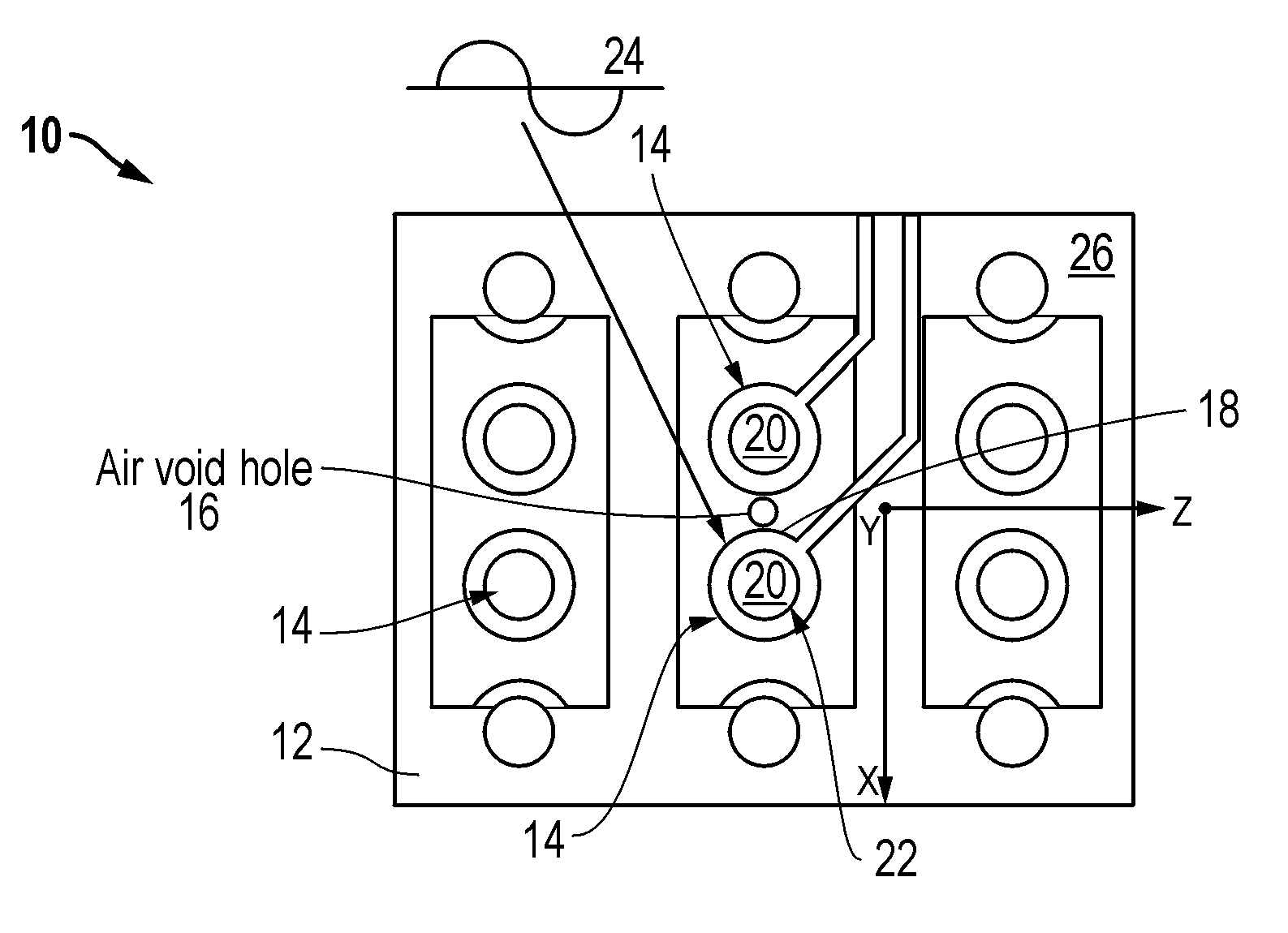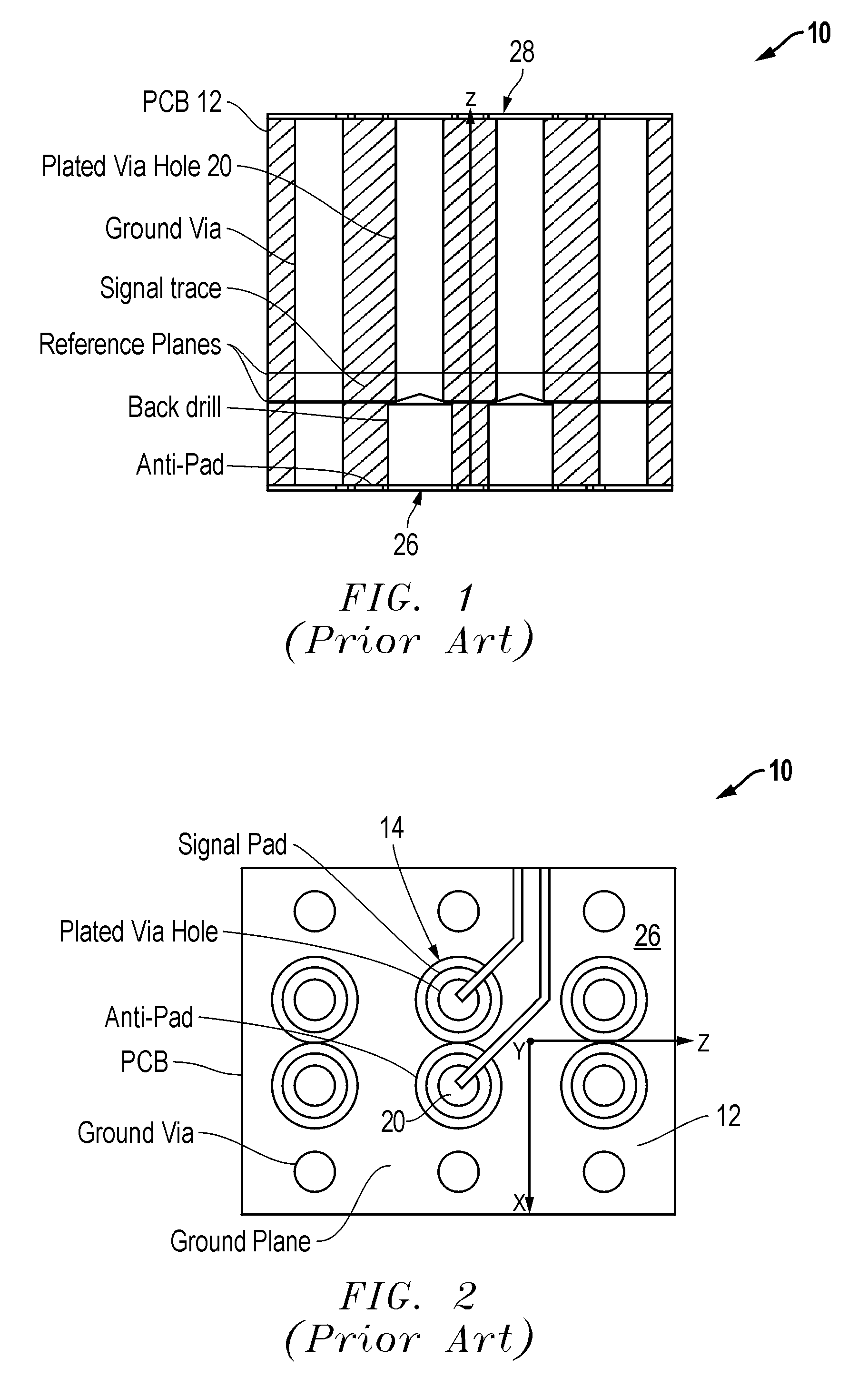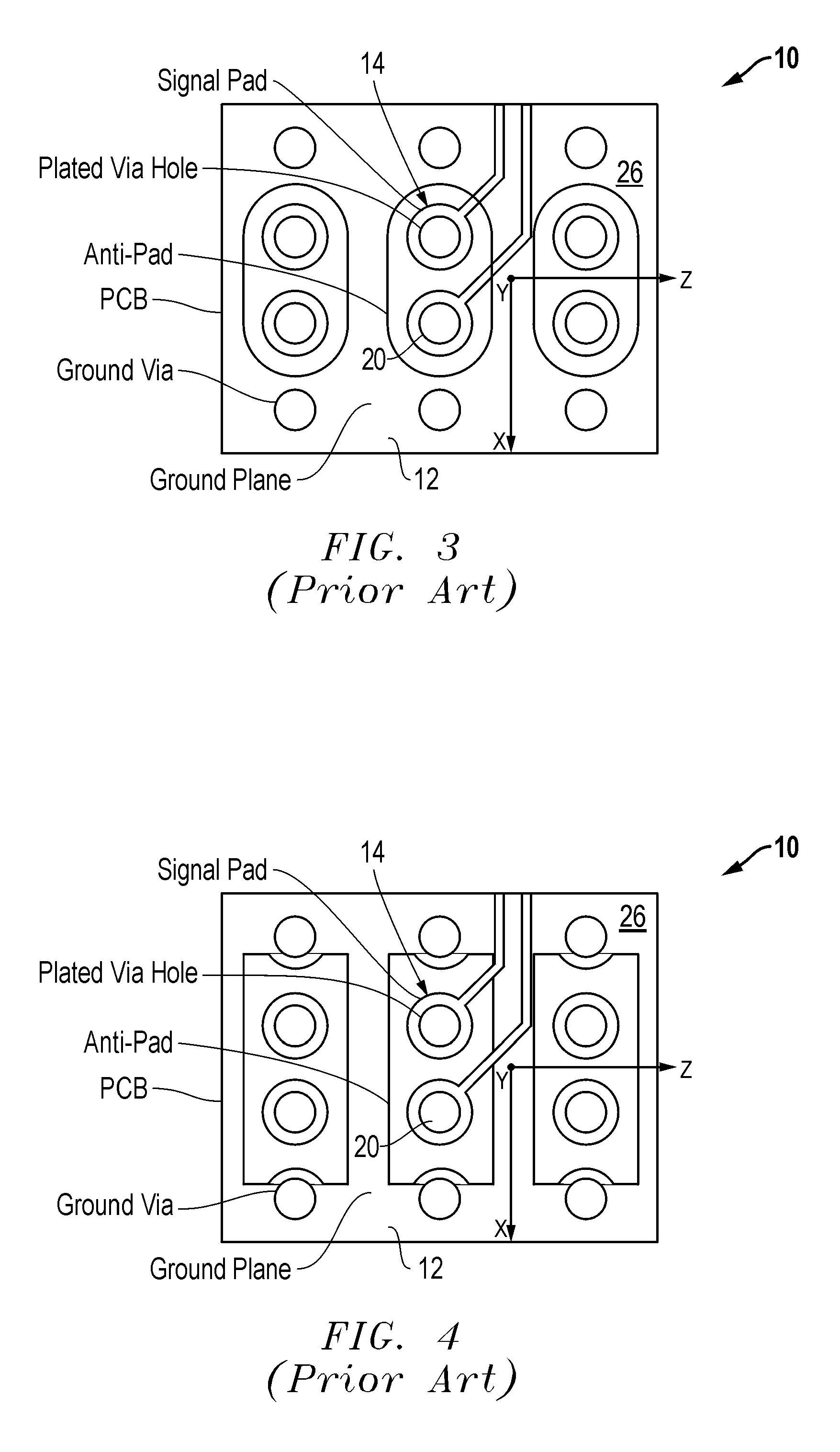Air void via tuning
a via structure and air gap technology, applied in the field of wiring boards, can solve the problems of increasing the density of the circuit, exacerbate the tuning problem, and the insertion and return loss, and achieve the effect of improving the main contributing factor
- Summary
- Abstract
- Description
- Claims
- Application Information
AI Technical Summary
Benefits of technology
Problems solved by technology
Method used
Image
Examples
Embodiment Construction
[0028] So that the manner in which the above recited features, advantages, and objects of the present invention are attained can be understood in detail, more particular description of the invention, briefly summarized above, may be had by reference to the embodiment thereof that is illustrated in the appended drawings. In all the drawings, identical numbers represent the same elements.
[0029] In the present invention a wiring board 10 and method of manufacture is disclosed. The electronics wiring board 10 having reduced electromagnetic coupling between electronic devices includes a base board 12 that is adaptable to receive at least one electronic component 14 mounted on the base board 12. At least one hole or void 16 is formed in the base board 12 in the proximity of the electronic component 14 to be isolated. The hole 16 is separated from the selected electronic component 14 to be isolated against undesired electromagnetic radiation by a portion or segment 18 of the base board or...
PUM
 Login to View More
Login to View More Abstract
Description
Claims
Application Information
 Login to View More
Login to View More - R&D
- Intellectual Property
- Life Sciences
- Materials
- Tech Scout
- Unparalleled Data Quality
- Higher Quality Content
- 60% Fewer Hallucinations
Browse by: Latest US Patents, China's latest patents, Technical Efficacy Thesaurus, Application Domain, Technology Topic, Popular Technical Reports.
© 2025 PatSnap. All rights reserved.Legal|Privacy policy|Modern Slavery Act Transparency Statement|Sitemap|About US| Contact US: help@patsnap.com



